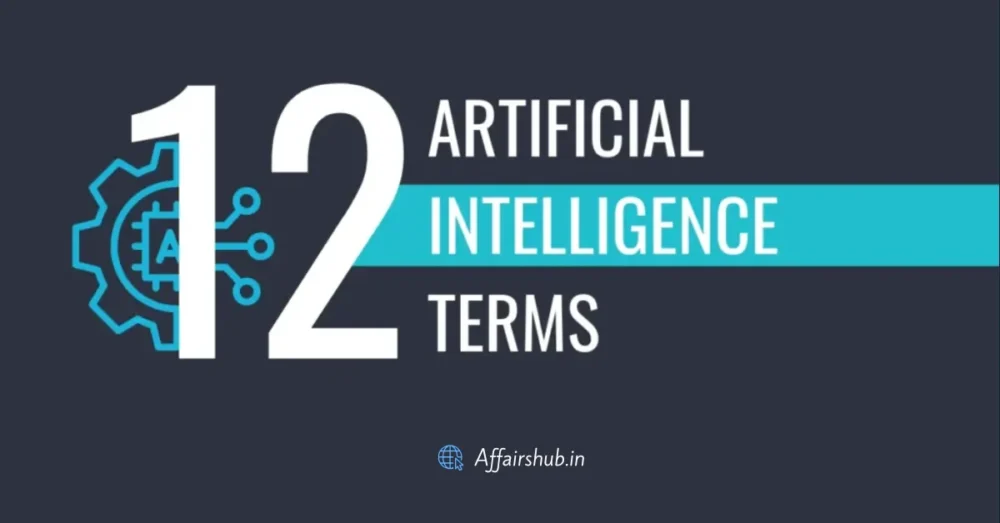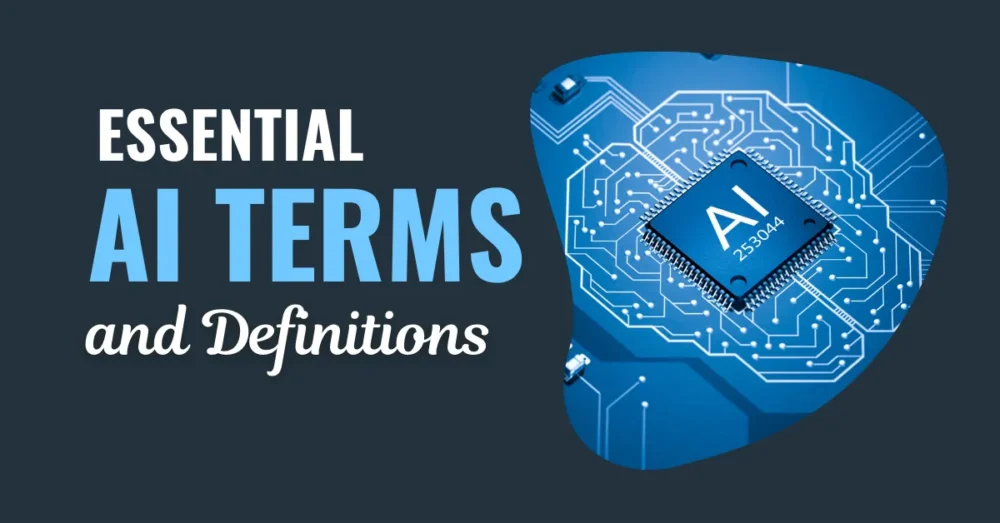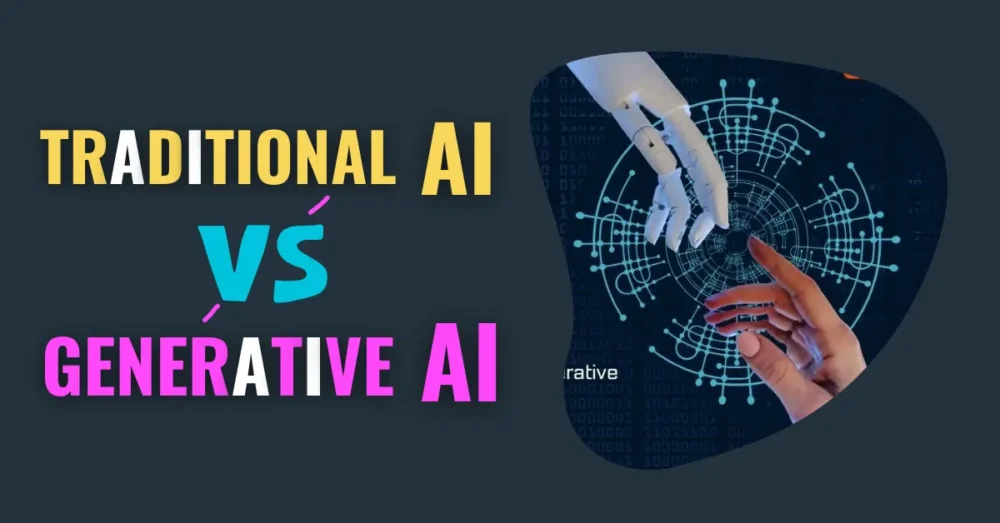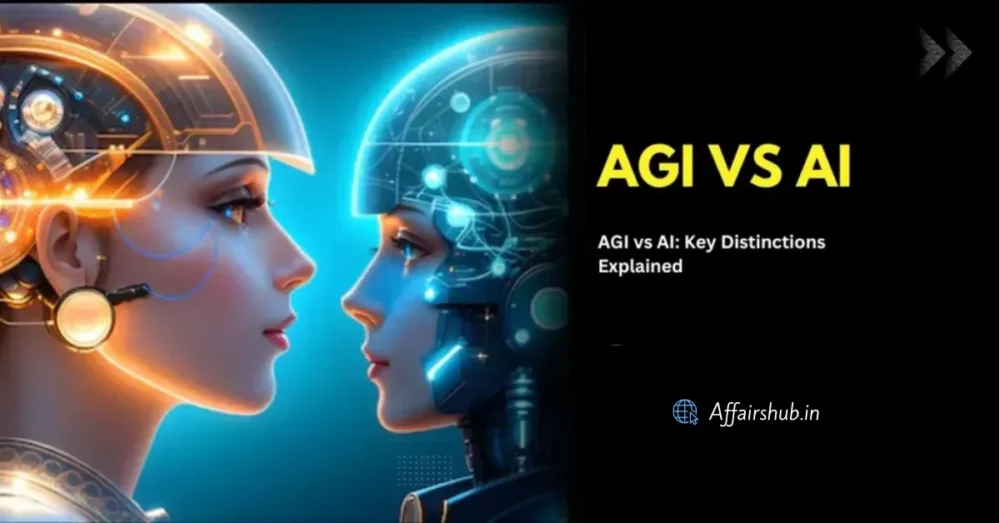Artificial Intelligence (AI) is reshaping the way we live, work, and interact with technology. From chatbots to self-driving cars, AI is a game-changer. But to truly understand the impact of AI, it’s essential to grasp the key terms in this ever-evolving field. In this article, we’ll break down 12 must-know AI terms that will enhance your understanding of this technology.
What is Artificial Intelligence (AI)?
At its core, Artificial Intelligence (AI) refers to the development of machines that can mimic human intelligence. These machines can learn from experience, adjust to new inputs, and perform human-like tasks such as problem-solving, decision-making, and language understanding. Essentially, AI is the foundation upon which modern advancements in automation and machine learning are built.
Types of Artificial Intelligence
AI can be categorized into three main types based on its capabilities and applications:
Narrow AI
Also known as Weak AI, Narrow AI is designed to perform a specific task, like facial recognition or language translation. It doesn’t possess general intelligence but excels at the specific job it was designed to do. Examples include Siri and Google Translate.
General AI
Often referred to as Strong AI, General AI has the potential to understand, learn, and apply intelligence across a wide range of tasks, much like a human. It doesn’t exist yet, but the concept involves machines capable of independent reasoning and problem-solving across various domains.
Superintelligent AI
Superintelligent AI refers to the theoretical AI that surpasses human intelligence in every field, from creativity to problem-solving. While it’s a subject of much debate, superintelligence could potentially transform society, for better or worse.

12 Artificial Intelligence Terms
1. Prompt
In the context of artificial intelligence (AI), a prompt is a question, command, or statement that you provide to an AI model to elicit a specific response or action. Essentially, it’s the input you give to the AI to guide its output. Prompts can range from simple phrases to complex paragraphs, depending on the desired outcome.
Types of Prompts
Text Prompts
- Simple Prompts: These are straightforward questions or commands, such as “What is the capital of France?” or “Translate this sentence to Spanish.”
- Complex Prompts: These involve more detailed instructions, like “Write a short story about a dragon and a knight who become friends.”
Image Prompts
- Text-to-Image Prompts: Commands that instruct the AI to generate an image based on a textual description, such as “Create an image of a futuristic cityscape.”
- Image-to-Image Prompts: Instructions to modify or enhance an existing image, like “Add a sunset background to this beach photo.”
Code Prompts
- Simple Code Prompts: Basic coding tasks, such as “Write a Python function to add two numbers.”
- Complex Code Prompts: More intricate programming challenges, like “Develop a machine learning model to predict house prices based on given data.”
Conversational Prompts
- Open-Ended Prompts: These encourage the AI to generate a more extensive and creative response, such as “Tell me about the history of the Roman Empire.”
- Guided Prompts: These provide specific context or constraints to shape the AI’s response, like “Explain the Roman Empire’s history focusing on its economic structure.”
2. Machine Learning (ML)
Machine Learning (ML) is a subset of AI where machines are trained to learn from data. Instead of being explicitly programmed, ML algorithms allow machines to identify patterns, make decisions, and improve performance over time. It’s like teaching machines to learn by experience.
Supervised Learning
In Supervised Learning, machines learn from labeled data. For example, teaching a machine to recognize images of cats by showing it hundreds of examples of labeled cat photos.
Unsupervised Learning
With Unsupervised Learning, the machine explores unlabelled data and identifies patterns or relationships on its own. This method is often used for clustering or grouping data.
Reinforcement Learning
Reinforcement Learning is about learning through trial and error. The machine receives feedback in the form of rewards or penalties based on its actions, encouraging it to make better decisions in the future. It’s commonly used in robotics and gaming.
3. Deep Learning
Deep Learning is a branch of machine learning that focuses on neural networks with many layers, mimicking the way the human brain works. It’s a key driver behind recent advancements in AI, powering technologies like voice assistants and self-driving cars.
Neural Networks
Neural Networks are the building blocks of deep learning. These are algorithms designed to recognize patterns, much like neurons in the human brain. They enable machines to process vast amounts of data and improve their understanding over time.
Role of Big Data in Deep Learning
The rise of Big Data has been instrumental in deep learning. With access to massive datasets, machines can be trained to perform more complex tasks with higher accuracy, from facial recognition to language translation.
Generative Pre-trained Transformer (GPT)
A Generative Pre-trained Transformer (GPT) is a type of artificial intelligence model designed to understand and generate human-like text. Here’s a breakdown of what it entails:
Generative: This means the model can create new content. Given a prompt, it can generate coherent and contextually relevant text.
Pre-trained: The model is trained on a large dataset of text from the internet before being fine-tuned for specific tasks. This pre-training helps the model understand language patterns and context.
Transformer: This refers to the architecture of the model. Transformers use a mechanism called self-attention, which allows the model to weigh the importance of different words in a sentence, regardless of their position. This leads to a better understanding of context and relationships between words.
GPT models have evolved over time, with each version becoming more powerful. For example, GPT-3 has 175 billion parameters, making it capable of performing a wide range of language tasks without needing task-specific training.
5. Natural Language Processing (NLP)
Natural Language Processing (NLP) enables machines to understand, interpret, and generate human language. It powers everything from voice assistants like Alexa to language translation services.
Speech Recognition
Speech Recognition allows machines to convert spoken language into text. It’s the technology behind virtual assistants and automated transcription services.
Text Generation
Text Generation involves creating meaningful text using AI. This is used in content creation tools, chatbots, and even automated journalism.
6. Artificial Neural Networks (ANN)
An Artificial Neural Network (ANN) is a computational model inspired by the human brain. It consists of layers of interconnected nodes (neurons) that work together to process information. ANNs are fundamental to machine learning, especially deep learning, enabling AI systems to make decisions based on complex data inputs.
7. Computer Vision
Computer Vision enables machines to interpret and make decisions based on visual data, like images or videos. It’s used in facial recognition, medical imaging, and self-driving cars. Essentially, it gives machines the ability to “see” and understand the world.
8. Robotics and AI
Robotics involves creating machines that can perform tasks in the real world, and when combined with AI, robots can be programmed to perform complex actions autonomously. Think of robotic arms in manufacturing or autonomous drones used in various industries.
9. Autonomous Systems
Autonomous Systems are machines or algorithms that operate without human intervention. This includes everything from self-driving cars to AI-powered drones. These systems rely heavily on machine learning, computer vision, and real-time decision-making capabilities.
10. AI Ethics
As AI continues to advance, questions about AI Ethics become more important. This includes discussions on privacy, bias, accountability, and the potential consequences of AI decisions. Ensuring AI systems are fair and just is crucial to their widespread adoption.
11. AI and Data Privacy
With the rise of AI comes increased concern over Data Privacy. As machines collect and analyze vast amounts of personal data, protecting that information from misuse or breach is critical. Ethical AI use ensures that privacy is respected, and data is handled responsibly.
12. Token in AI
In the context of artificial intelligence (AI), a token is a fundamental unit of data used in natural language processing (NLP) and machine learning. Here’s a detailed explanation:
Definition: A token can be a word, subword, character, or even a punctuation mark. Essentially, it’s a piece of text that the AI model processes individually.
Tokenization: This is the process of breaking down text into tokens. For example, the sentence “AI is fascinating!” can be tokenized into [“AI”, “is”, “fascinating”, “!”]. This step is crucial for preparing text data for further processing by AI models.
Usage in Models: Tokens are used by AI models to understand and generate text. The model processes each token, learns its context, and uses this understanding to perform tasks like text generation, translation, or summarization.
Token Limits: Different AI models have limits on the number of tokens they can process at once. For instance, some models can handle up to 128,000 tokens in a single request.
Importance: Proper tokenization helps AI models to efficiently analyze and interpret text, leading to better performance in various NLP tasks.
Conclusion
AI is no longer just a buzzword—it’s a reality that’s transforming our lives. Whether it’s improving healthcare, enhancing customer experiences, or driving innovation in industries, understanding key AI terms is crucial for staying ahead. From machine learning to ethical considerations, this article has outlined the 12 essential AI terms you need to know.
FAQs
What is the difference between AI and Machine Learning?
AI is the broader concept of machines mimicking human intelligence, while machine learning is a subset where machines learn from data without explicit programming.
What is Deep Learning?
Deep learning is a type of machine learning that uses neural networks with many layers to process large amounts of data and learn from it.
How is AI used in everyday life?
AI is used in various ways, including virtual assistants, personalized recommendations, self-driving cars, and healthcare diagnostics.
What are the ethical concerns surrounding AI?
Major concerns include bias, job displacement, privacy issues, and the transparency of AI decision-making processes.
Will AI take over human jobs?
While AI may replace certain tasks, it’s more likely to augment human work rather than completely replace jobs. New roles will also emerge in AI-related fields.






